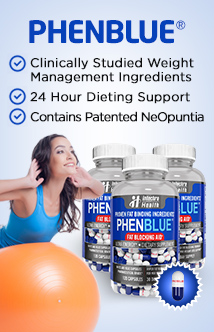Cholesterol Lowering Diet
- Reviews
- Hits: 1481
About a Cholesterol Lowering Diet
Three important risk factors for heart attack are: high blood cholesterol, hypertension (high blood pressure) and excess body weight. A healthy cholesterol lowering diet typically reduce all three risk factors. For example, it is possible to reduce the level of cholesterol in your blood by between 5 percent and 10 percent just by eating healthily. On average, reducing cholesterol by 1 percent can lower the risk of atherosclerosis by 2 percent.
Cholesterol Lowering Diet to Reduce Risk of Heart Disease
A healthy cholesterol lowering diet has four goals:
-
To reduce total blood cholesterol
-
To improve the ratio of HDL (good) to LDL (bad) cholesterol
-
To reduce high blood pressure
-
To maintain a healthy weight
Dietary Guidelines for Lowering High Blood Cholesterol Levels
In general, eat a nutrient-dense cholesterol lowering diet containing foods from all food groups (fruits; vegetables; grains; dairy foods; meat, poultry, fish, seeds, nuts and beans; fats and oils). Include plenty of fruits, vegetables and whole grains, and choose lean meat (trimmed of all fat and skin), as well as low-fat or fat-free dairy products. Limit your total daily fat intake to 30 percent of calories, and reduce to a minimum your intake of saturates and trans-fats. Eat less than 6 grams of salt (sodium chloride) per day (2,400 milligrams of sodium).
1. Reduce Intake of Saturated Fat
This means reducing your intake of animal foods - most of which are major sources of saturated fat in the typical American diet. For example, butter, cheese, whole milk, ice cream, and cream all contain high amounts of saturated fat. Saturated fatty acids are also found in all meat, as well as poultry, fish, and shellfish, although the latter generally contain less saturates than meat.
-
Avoid processed meats (eg. bacon, bologna, salami, hot dogs, and sausages)
-
Choose only very lean meat, skinless chicken or turkey, or any fish
-
Trim all visible fat/skin before cooking/eating
-
Avoid animal fats (solid at room temperature) like butter
-
Choose fats and oils with 2 grams or less saturated fat per tablespoon, such as liquid/tub margarines, canola oil and olive oil. Canola oil (rapeseed oil) and olive oil are high in monounsaturated fats. Recent research indicates that substituting monounsaturated fat for saturates reduces blood cholesterol levels.
-
Latest research also suggests that eating oily fish regularly can help to reduce the risk of coronary heart disease and improve the chances of survival after a heart attack. How fish oils do this, is unclear. It may be by helping to keep the heartbeat regular, reducing the level of triglycerides (fatty substances found in the blood), and preventing blood clots from forming in the coronary arteries.
2. Reduce Intake of Trans-Fats
The name \"Trans-Fats\" refers to any fat that starts as a polyunsaturated fat and is then \"transformed\" into saturated fat by a process called hydrogenation. It is also called hydrogenated or partially hydrogenated fat. The food industry uses hydrogenation to reduce rancidity, and to utilize cheaper fats. Latest medical evidence suggests that trans-fatty acids raise blood cholesterol even more than saturated fat. Trans-fats or hydrogenated fats are found in solid or semi-solid margarines, and in commercial cooking oils used in the manufacture of commercially baked goods, such as cookies and crackers, and in nondairy substitutes, such as whipped toppings, coffee creamers, cake mixes, and even frozen dinners. They also can be found in some snack foods like chips, candy bars, and buttered popcorn.
-
When buying processed foods, especially margarine or baked goods, study food labels carefully
-
Avoid foods that include \"trans-fats\", \"hydrogenated fat\" or \"partially hydrogenated fat\"
3. Reduce Total Fat Intake
An important goal in your blood cholesterol-lowering diet is to reduce your total fat consumption, as this is an effective way to eat less saturated or trans-fats.
-
Limit your intake to a maximum of 30 percent of calories per day
-
If your cholesterol level is high, your doctor may recommend a lower limit of 20-25 percent of calories
-
To reduce total fat, include vegetarian sources of protein in your weekly diet. Instead of meat, choose beans, nuts and seeds as well as other protein-rich vegetable options
-
While milk provides many essential nutrients, both 1 percent and skim milk provide the same nutrients as whole milk (3.3 percent) or 2 percent milk, while providing less saturated fat and cholesterol and fewer calories
-
Choose low-fat cheeses that have between 2 and 6 grams of fat per ounce. Best cheeses include: cottage cheese (low-fat), and farmer cheese (made with skim milk)
-
Regular ice cream is relatively high in hydrogenated fat and cholesterol. Eat it in small amounts and less often. Where possible, switch to lower-fat frozen desserts like ice milk, yogurt, sorbets, and popsicles.
4. Reduce Intake of Dietary Cholesterol
Previously, dietitians and cardiologists believed that a key step towards reducing elevated cholesterol levels was to lower consumption of cholesterol-containing foods, like eggs and organ meats. While this remains a dietary goal, the reduction of trans-fat intake is now considered more important.
-
Eat no more than four egg yolks a week including those in processed foods and many baked goods.
-
Egg whites contain no cholesterol and can be substituted for whole eggs in recipes.
-
Avoid organ meats (brain, liver, kidney, sweetbread)
-
Avoid high fat meats
-
Avoid high fat dairy foods
-
Substitute low-fat or fat-free dairy products for whole milk varieties
5. Reduce Intake of Sodium
There is a clear link between high sodium intake and high blood pressure. It is the sodium in the salt that contributes to elevated blood pressure. Most people eat many times the amount of salt we need. The recommended maximum is 6 grams of salt per day, (about one teaspoon) - the equivalent of 2,400 milligrams of sodium - although dietitians believe that we actually need only 1 gram.
-
Eat a diet of predominately fresh instead of processed food
-
Check food labels for sodium. Become more aware of the sources of sodium in your diet
-
Use herbs and spices in cooking, rather than salt
-
Moderate your intake of salty food, and table salt
6. Eat Plenty of Fruit and Vegetables
Fruits and vegetables typically contain zero cholesterol, are very low in fat and low in calories. By eating fruits as a snack or for dessert, and by eating vegetables as snacks and side dishes, you can increase your intake of vitamins, minerals, and fiber and lower your intake of saturated fat and dietary cholesterol.
In fact, there is clear evidence that eating a diet rich in a variety of fruits and vegetables can lower the risk of heart disease. Exactly why fruit and vegetables have this beneficial effect is not known. It may be due to the antioxidants (vitamins and other substances) in the fruit and vegetables. Antioxidants prevent \'oxidation\', the chemical process which allows cholesterol to form atherosclerosis (narrowing of arteries). There is no evidence that vitamin supplements have the same health benefits.
In addition, fruit and vegetables are typically rich in potassium, a mineral which may help to regulate blood pressure and prevent irregular heart rhythms. Fruit and green vegetables are also rich in folate (folic acid). This reduces the blood level of a substance called homocysteine, which itself may be a risk factor for heart disease. More research is required to find out whether eating more folate will, by itself, reduce the risk of heart disease.
7. Eat Plenty of High Fiber Whole Grains and Beans
Breads, cereals, pasta, rice, dried peas and beans (legumes) are useful sources of healthy carbohydrates and are low in saturated fat. In addition, the soluble fiber found in foods such as oat and barley bran and in some dried beans can reduce blood cholesterol levels.
-
As a general guide, choose varieties with a low GI value
-
Eat at least 50 percent of your grains in the form of whole grains
-
Whole grains include varieties such as: whole wheat bread, whole wheat pasta, brown or basmati rice, dried peas and beans (like split peas, lentils, kidney beans, and navy beans)
-
Avoid high fat types of bread products such as: croissants, biscuits, donuts, muffins














